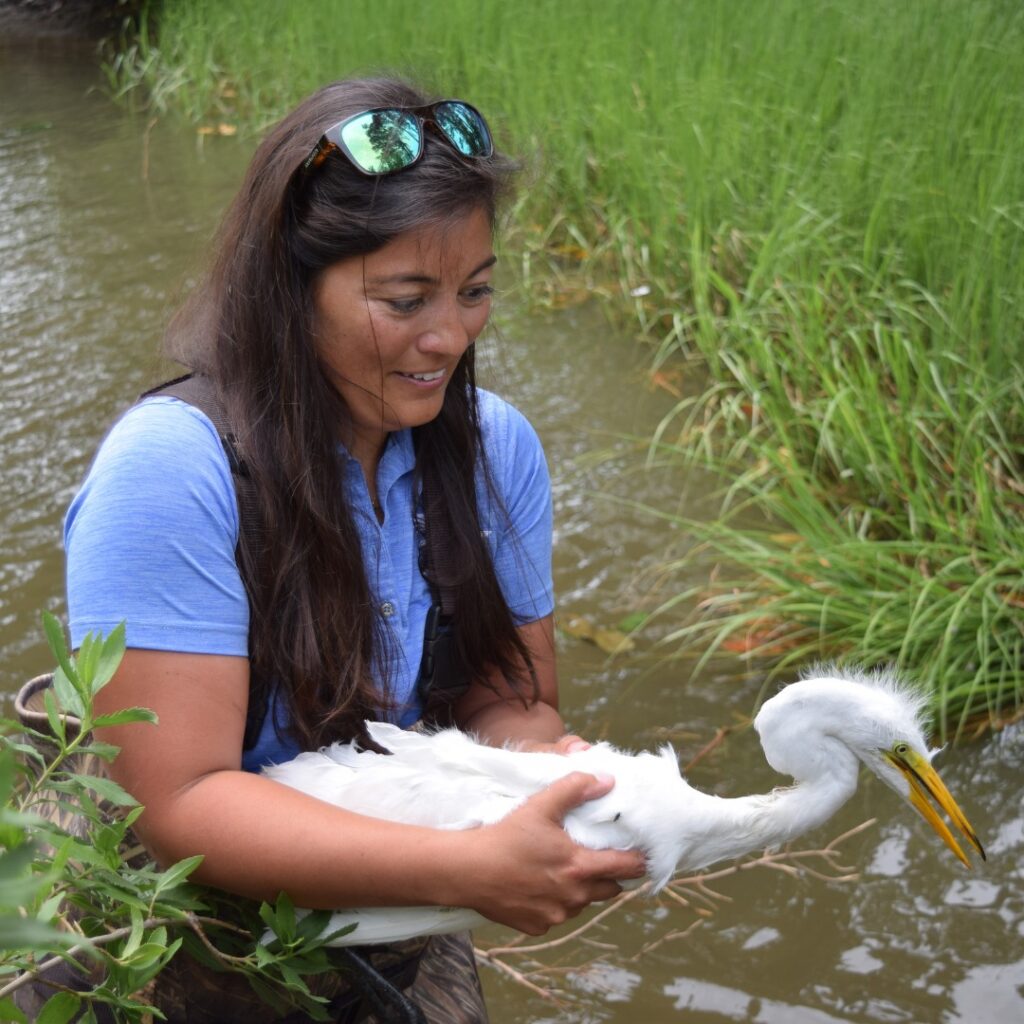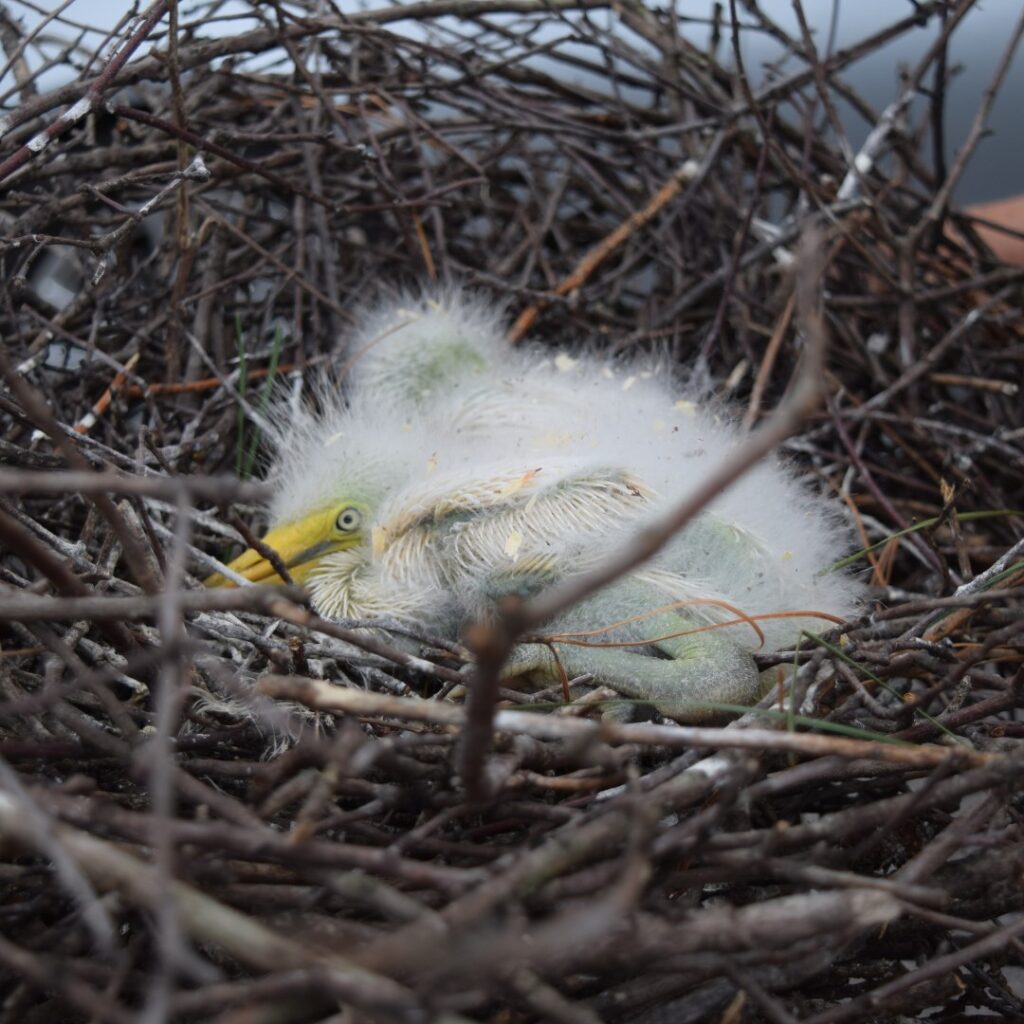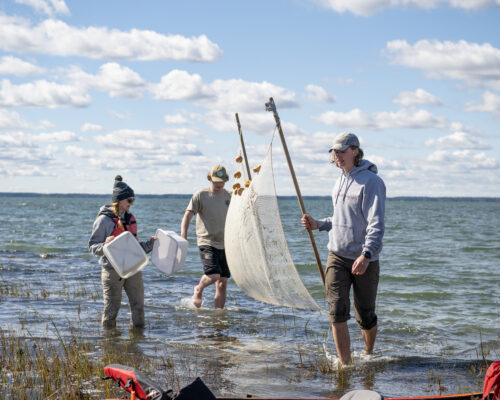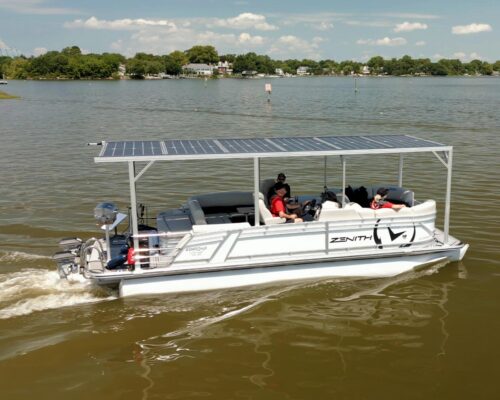June 26, 2023, was a bad day for some egrets in Portsmouth, Virginia. A set of wicked storms with winds up to 80 mph blew adult egrets and their chicks out of their nests. Many nests were destroyed. Fortunately, many of the chicks were rescued and have now been rehabilitated and released.
Egrets often nest in colonies. They like stands of tall loblolly pines close to, but often not actually on, the water. There are four major colonies in southeastern Virginia, one of which is in Portsmouth. There can be several nests in one tree. Each nest usually contains three or four eggs, but there can be as many as six. Egret chicks are able to fly when they are just 6-7 weeks old.
After the thunderstorms of June 26, residents near the egret colony discovered all the damage. There were live and deceased birds on the ground. Some nests were blown entirely out of their trees. Residents, Portsmouth Animal Control, Casey Shaw of the Elizabeth River Project, and bird rehabilitator Lisa Barlow all responded and worked together to rescue the birds that survived the storms.
Most of the survivors went to Barlow, an experienced and gifted bird rehabilitation expert in Chesapeake, Virginia. Barlow tells Bay Bulletin, “I received 18 chicks. Two had multiple wing fractures that could not be treated, and they were euthanized. The other 16 responded well. They have now all be released in the southern branch of the Elizabeth River. Five of the released birds are still hanging around their release spot, and are doing well.”
Great egrets themselves are beautiful and elegant snowy white shorebirds. They are one of the largest wading birds in the Bay region, standing around four feet tall with a wingspan up to 50 inches. Their diet is primarily fish, but they will eat invertebrates, amphibians, reptiles, small mammals and even other birds. You may have seen them hunting frogs in roadside ditches. Great egrets were almost wiped out in the late 1800s, when they were heavily hunted for their beautiful feathers to be used in hats.

The National Park Service credits public outrage for bringing forth legislation to protect the birds from hunting. Today, egrets are protected under the Migratory Bird Treaty Act of 1918. That law made it illegal to hunt, trap, or otherwise harm great egrets as well as many other bird species.
Casey Shaw, who is Director of Marketing and Communications for the Elizabeth River Project, said habitat loss is the major threat to egrets in the Chesapeake Bay at this time. She said “The fate of these birds hinges on their habitat. They need loblolly pines to nest in, but these trees are being cut down at an alarming rate over the decades. This not only reduces the number of rookeries, but also makes the remaining pines more vulnerable to storms. Pines are social trees, like the birds. They support each other with their roots and canopies. When they are isolated, they are more likely to fall.”
With the nesting season behind us for this year, the number of birds in Barlow’s care is finally subsiding. Hopefully the egrets she and the others rescued will be back in the rookery in the future, raising their own chicks. If you find wildlife that you think is in need, you can find a list of licensed rehabilitators at https://dwr.virginia.gov/wildlife/injured/rehabilitators.
-Kendall Osborne




